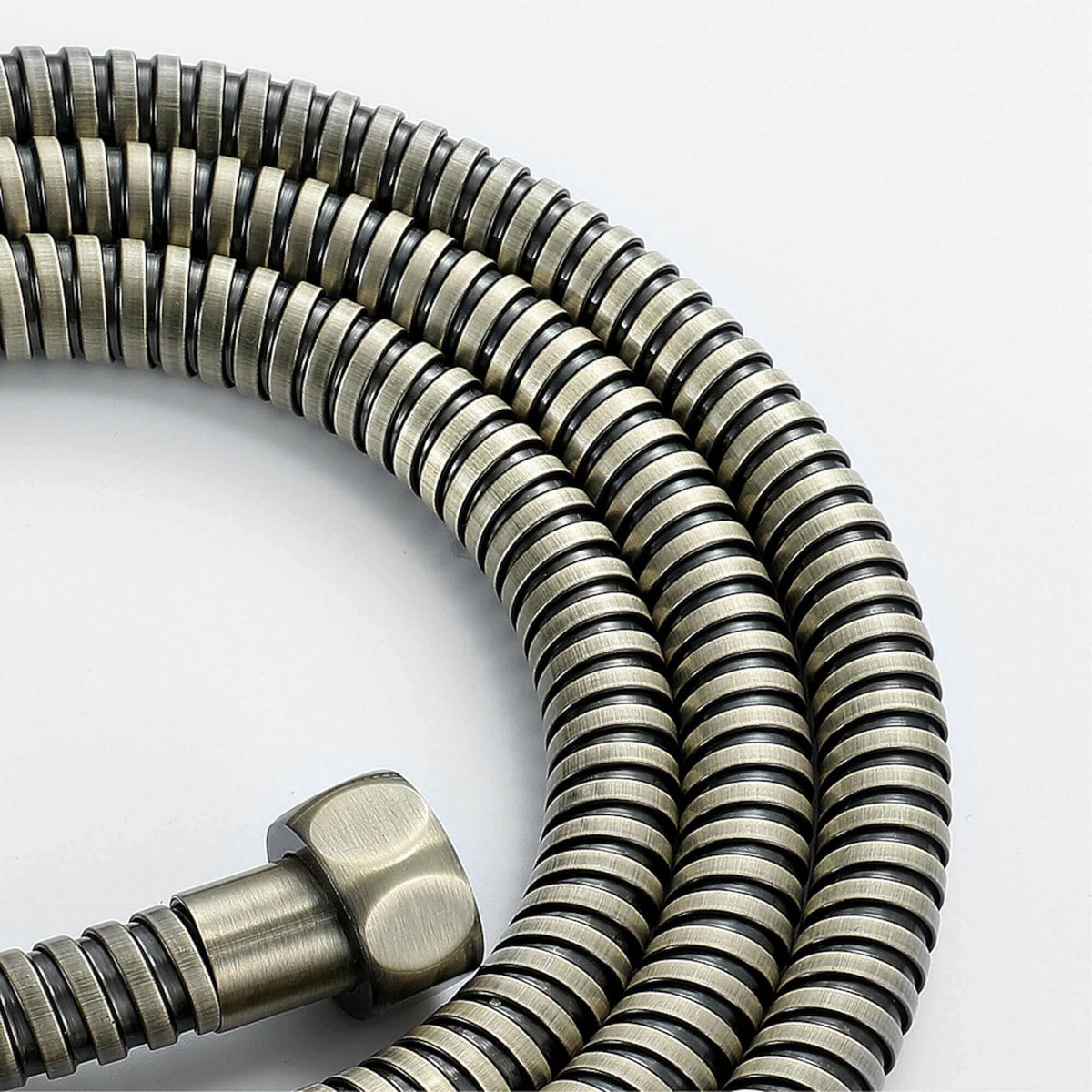 FREE UK DELIVERY.
EXPRESS OPTIONS AVAILABLE
FREE UK DELIVERY.
EXPRESS OPTIONS AVAILABLE

How to Clean a Shower Hose in 7 Easy Steps
|
|
Time to read 6 min
 FREE UK DELIVERY.
EXPRESS OPTIONS AVAILABLE
FREE UK DELIVERY.
EXPRESS OPTIONS AVAILABLE
 UP TO 10 YEARS GUARANTEE
FOR PEACE OF MIND
UP TO 10 YEARS GUARANTEE
FOR PEACE OF MIND
 30 DAY RETURNS
NO QUIBBLE GUARANTEE
30 DAY RETURNS
NO QUIBBLE GUARANTEE
|
|
Time to read 6 min
Shower hoses are an essential part of any shower set. They allow you to direct the flow of water exactly where you want it to go.
But over time, shower hoses can become clogged with mineral deposits, soap scum, and mildew. If you’re not careful, these deposits can build up and cause your shower hose to malfunction. That’s why it’s important to perform a deep clean on your shower hose on a regular basis.
Cleaning your shower hose is a simple process that only takes a few minutes. But it can seem a bit daunting if you’ve never done it before.
That’s why we’ve put together this step-by-step guide to help you get the job done quickly and easily!
Soak the hose in a vinegar-water solution for at least 30 minutes to loosen limescale and other deposits, then flush it with cool water.
Use a baking soda paste to scrub away any remaining dirt or stains gently.
Clean your shower hose every three months, especially if you live in an area with hard water, to maintain optimal performance.
Keeping your shower hose clean ensures a steady, hygienic water flow while preventing limescale buildup and grime accumulation. With just a few simple steps and household ingredients, you can restore your hose to its best condition. Follow this 7-step guide for an easy and effective cleaning process.
Before you start cleaning your shower hose, there are a few things you’ll need to gather:
A bucket, large bowl or plastic bag
White vinegar
Baking soda
A clean rag or sponge
A toothbrush (optional)
A spray bottle
Detach the shower hose from the shower head. Use a pair of pliers to loosen the connection if needed.
Fill a plastic bag, bowl, or bucket with equal parts white vinegar and water. Put the shower hose into the mixture and make sure that the entire hose is submerged.
Let the hose soak for at least 30 minutes - the longer it soaks, the more effective it will be. If your shower hose is particularly dirty, you may need to soak it overnight. Soaking it will help loosen any stubborn limescale deposits that may be clinging to the hose.
After soaking, remove the hose from the white vinegar mixture and place it in the sink. Turn on the tap and let cool water run through the hose to flush out any residue.
Mix together a paste of baking soda and water. Apply the paste to any areas of the hose that are still dirty or stained. Use a clean rag or sponge to remove limescale and scrub away any dirt, grime, and stains. Be sure to scrub gently - you don’t want to damage your shower hose! For hard-to-reach areas, you may need to use a toothbrush.
Rinse away all of the cleaning solutions with warm water. Once everything has been rinsed away, give your shower hose a final once-over with a clean rag just to be sure that all of the dirt and grime have been removed.
Reattach the shower hose to the shower head, then test the hose to make sure it’s functioning properly within the shower system. If your shower hose is still not functioning properly after cleaning it, you may need to replace it. Consult a plumber or specialist bathroom store for guidance.
If you’re still experiencing issues such as restricted water flow or leaks, it may be time to replace your shower hose.
Top Tip: Consider upgrading to a PVC shower hose.
If you frequently struggle with limescale buildup and grime on your metal shower hose, switching to a PVC shower hose could be a more practical option. Unlike traditional metal hoses that have ridges where dirt accumulates, PVC hoses have a smooth surface, making them much easier to clean. A simple wipe with a damp cloth is often all it takes to keep them looking fresh.
Low Maintenance: The smooth, non-porous surface resists limescale and grime buildup.
Flexible & Durable: PVC hoses are lightweight yet strong, making them a practical choice for busy households.
Rust-Free: Unlike metal hoses, PVC options won’t corrode, ensuring long-lasting performance.
Stylish Options: Available in black, silver, gunmetal grey, and brushed brass to complement various bathroom styles.
Regular deep cleaning of shower hoses is easy! With just a few simple household ingredients and following the handy tips above, you’ll have a sparkling, clean shower hose in no time! And be sure to add this easy cleaning task to your regular cleaning routine so that your shower hose stays in great condition for years to come.
Don’t hesitate to contact us at House of ENKI for all of your bathroom needs!
Yes, there are a number of different cleaners that you can use to clean shower hoses, such as limescale remover that can help remove awkward limescale deposits. However, vinegar and baking soda are often the most effective. For an extra boost, add a few drops of lemon juice or tea tree oil to your cleaning solution. Make sure to never mix chemicals.
It’s generally recommended that you clean shower hoses at least once every three months. However, if you live in hard-water areas, you may need to clean it more frequently.
There are a few things you can do to prevent your shower hose from getting dirty:
The best way to clean your shower head is to simply submerge it in a plastic bag filled with white vinegar overnight. In the morning, remove the shower head and scrub it with an old toothbrush to remove limescale and dirt buildup. Rinse it well and then reattach it to the shower hose and return it to the shower head holder.
You should clean your shower head at least once a month to prevent a build up of limescale and dirt. If you have hard water, you may need to clean it more frequently.
Exposed shower valves are the most common type of shower valve; these are mounted externally on the wall, making them easy to install and maintain. Concealed shower valves are another option. They are typically located in the wall behind the shower. Bar shower valves are a popular option for handheld shower heads. They are typically located on the wall near the shower head.
You can find shower valves in a range of styles, from traditional shower valves to modern shower valves. They also come in a variety of colours, from antique bronze to chrome, so there is sure to be a valve to match your other bathroom fixtures.
If you're in the market for a new shower head, there are a range of different types of shower heads to choose from, including:
Rainfall shower heads: These shower heads provide a gentle, rainfall-like stream of water.
Handheld shower heads: These shower heads can be held in the hand and are often used for bathing children or pets.
Wall-mounted shower heads: These shower heads are mounted on the wall and provide a powerful stream of water.
Adjustable shower heads: These shower heads have adjustable settings so you can control the amount of water pressure and spray pattern.






